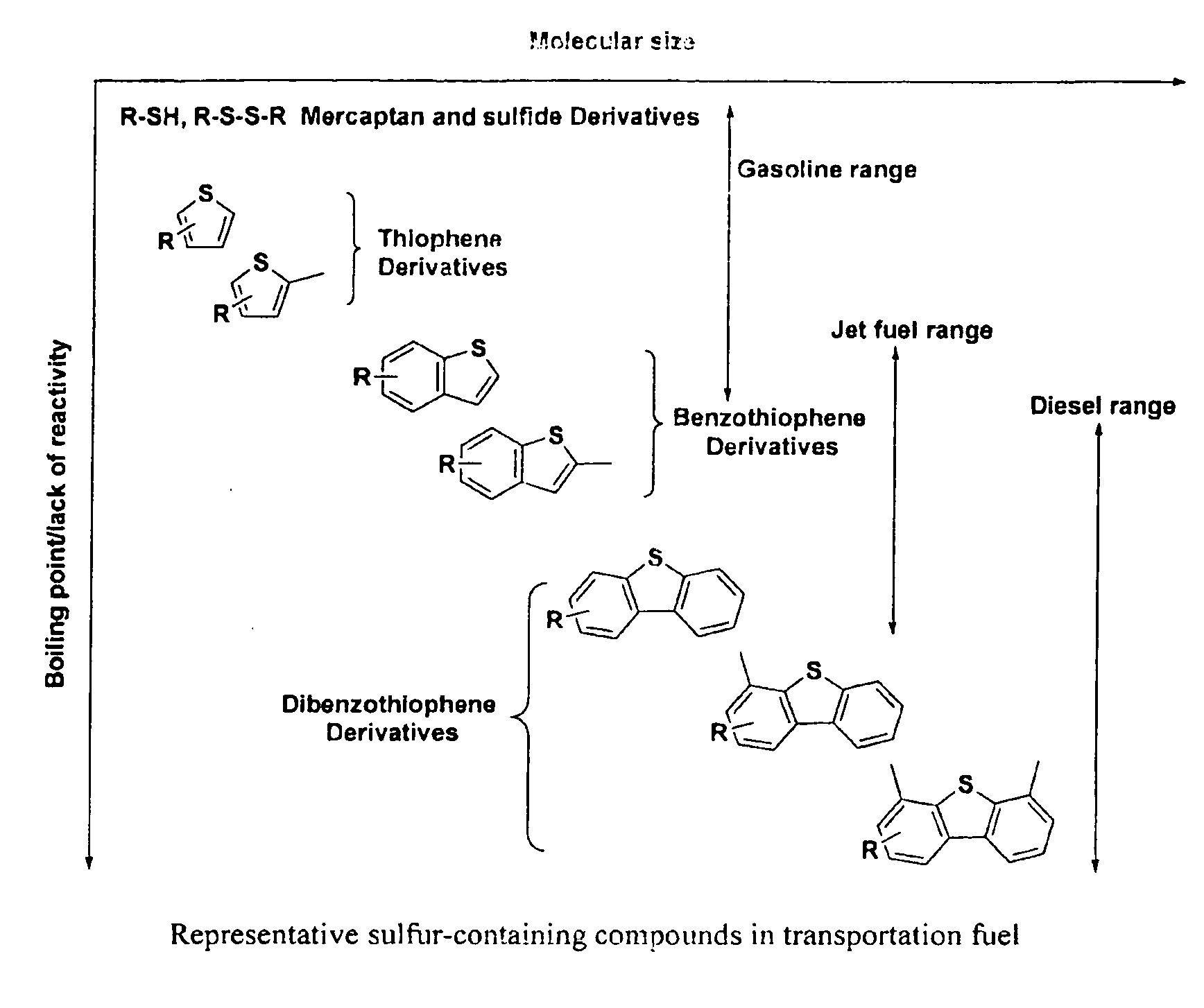Sorbent compositions and desulfurization method using the same
a technology of sorbent composition and desulfurization method, which is applied in the direction of hydrocarbon oil cracking, physical/chemical process catalyst, other chemical processes, etc., can solve the problems of serious human health and environmental problems, deep desulfurization is becoming a great challenge, and no other fuel can match diesel in its ability to move freight economically
- Summary
- Abstract
- Description
- Claims
- Application Information
AI Technical Summary
Benefits of technology
Problems solved by technology
Method used
Image
Examples
working examples
[0032](All adsorption experiments have been replicated to reach a less than 5% total sulfur adsorption capacity difference):
Preparation of Sorbent (Dry Premixing)
[0033]The preparation of iron (III) nitrate nonahydrate-doped Montmorillonite K10 clay is representative: iron (III) nitrate nonahydrate (Aldrich Chemical Co., Milwaukee, Wis.) (0.020 g) was contacted with Montmorillonite K10 clay (Aldrich Chemical Co., Milwaukee, Wis.) (0.200 g) in a mortar and pestle. Alternatively, they were physically mixed in a glass vial for batch adsorption tests. After thorough mixing at room temperature (25-30° C.), the sorbent was added to the jet fuel or diesel.
Alternative Method (Preferred)
[0034]5 ml of model gasoline, jet fuel or diesel was added to 0.200 g of clay and 0.020-0.040 g of metal nitrate (10-20% metal nitrate loading) in a 15 mL capped sample vial equipped with a magnetic stirring bar using a 5.0 mL measuring pipette, the mixture stirred at room temperature (25-30° C.) for a period ...
PUM
| Property | Measurement | Unit |
|---|---|---|
| particle size | aaaaa | aaaaa |
| temperature | aaaaa | aaaaa |
| temperature | aaaaa | aaaaa |
Abstract
Description
Claims
Application Information
 Login to View More
Login to View More - R&D
- Intellectual Property
- Life Sciences
- Materials
- Tech Scout
- Unparalleled Data Quality
- Higher Quality Content
- 60% Fewer Hallucinations
Browse by: Latest US Patents, China's latest patents, Technical Efficacy Thesaurus, Application Domain, Technology Topic, Popular Technical Reports.
© 2025 PatSnap. All rights reserved.Legal|Privacy policy|Modern Slavery Act Transparency Statement|Sitemap|About US| Contact US: help@patsnap.com


